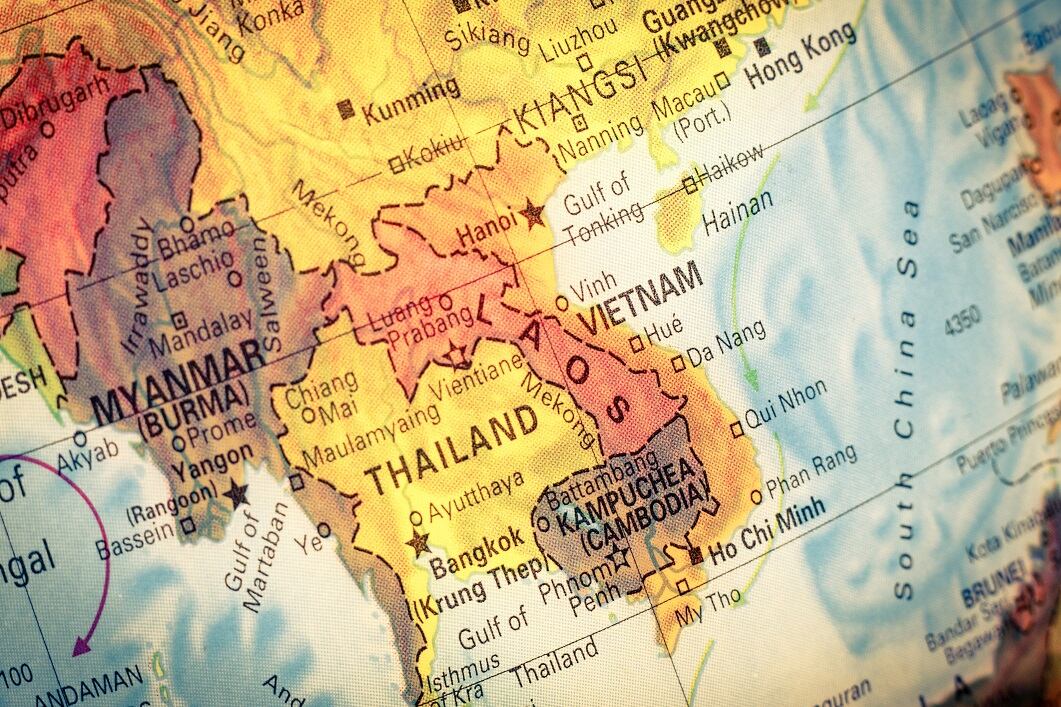Laos isn't the first place one thinks about when it comes to beer - or most other things, really. Even within its own region, the landlocked Southeast Asian country isn't the most well-regarded of nations.
Powerhouses like Singapore, Thailand and Indonesia take centre stage, though few are aware that Laos boasts the highest regional percentage increase in GDP for the past two decades, according to official figures. The place is booming, and a great deal of this success has come from its beer.
Forming strategic alliances with foreign enterprises has become a booming trend as the Lao government lays out the welcome mat to international associates eager to form mutually beneficial relationships with homegrown businesses.
Beerlao
One of the earliest companies to blaze this trail has been Lao Brewery, the manufacturer of Beerlao, the local drop. It has come a long way in four decades through its transformation from state-owned brewery to trusted partner of one of the world’s biggest drinks companies.
And while occupying almost the entire beer market in the country, it disproves the rule that a virtual monopoly must have a harmful impact on quality. It would be very fair to say that Beerlao is world-class in anyone’s book.
Since its inception in 1973, as a joint-venture between foreign investors and Lao businessmen under the name of Lao Beer and Ice Factory, Lao Brewery’s lager-style beer has become a much-loved symbol of the country. Now half-owned by Carlsberg, it produced 350m litres of beer a year in 2017 and is the clear market leader with a claimed 97% of the market.
If this looks like an exaggeration of Kazakh electoral proportions, that’s probably right. But unlike the 98% of voters who supposedly opted for the incumbent president of the oil- and corruption-rich nation in 2015, the Beerlao figure might be off by just a couple of percent. Even though other brands have joined the market, such as Heineken and Singapore’s Tiger, the local brand is simply wildly popular.
Jasmine rice
After so-called “national liberation”, when the country turned communist in December 1975, Lao Brewery was turned over to the state. Over a decade later, the government started to move towards a market economy, prompting the Lao Brewery to sell a 51% stake in itself to foreign investors. By 2005, Carlsberg had come to own half of the shares in the company, and so it remains today.
On every street and around every corner across the country, Beerlao has a presence. In cities and in the middle of cloud-shrouded mountains, one will find the ubiquitous yellow signboards advertising the brew. They say it’s the second-most popular beverage in the country after water, and they might be right.
After a day of riding elephants and meandering down the mighty Mekong in rowing boats, it was time for to get back down to work—by cracking open a beer.
This has become less of a pastime over the years and more of a duty, given the quantity we have had to knock back in the name of journalism. But yet it remains a pleasure when done in Laos.
In my opinion, the standard Beerlao recipe, and most popular of the three lines available—Lager, Dark and Gold—is cleaner-tasting than most beers one finds in Asia, which tend to be sweeter and stickier. The beer is based on locally grown jasmine rice, with malt imported from France and Belgium and hops and yeast from Germany.
The new Gold line takes khao kai noy rice, which is renowned for its pleasant scent and non-sticky texture, while Beerlao Dark is brewed with high-quality black malt from Germany, and sports the accolade of the first international award-winning premium local beer.
Building exports
Despite its massive following at home, getting Beerlao noticed on the export market has been a challenge. Indeed, a decade ago, just 1% of production was said to have been shipped overseas.
Without realising it, though, the legions of young, foreign backpackers who visited Laos each year went some way to marketing it in other countries through the T-shirts and other branded paraphernalia they took with them on their travels and then back home.
In 2009, the New York Times reported that Lao Brewery aimed for 10% international sales by building a network of fans-turned-distributors who would open up new markets for the beer. Through this ad-hoc approach, the beer has since become available across Southeast Asia, cities in America and China, as well as large swathes of Europe and Australasia. Though its global presence could still hardly be called widespread, the export situation has been improving.
Sitting with a bottle of Beerlao in Luang Prabang, Laos’s culinary capital at the centre of the country, we watched scores of backpackers and tourists walking down the main drag of tasteful bars and restaurants either gripping bottles of Beerlao in their hands or advertising it on their bodies.
Even though more alternative brands are available to buy now, asking for “a beer” will return you the local brew—you have to specify anything else by name.
It is hard to think of another mass-produced brand anywhere else that evokes so much adoration by locals and visitors alike, especially when its monopolistic nature should by rights spark disdain. Beerlao not only displays the country’s name on its label, but it also carries its heart.

